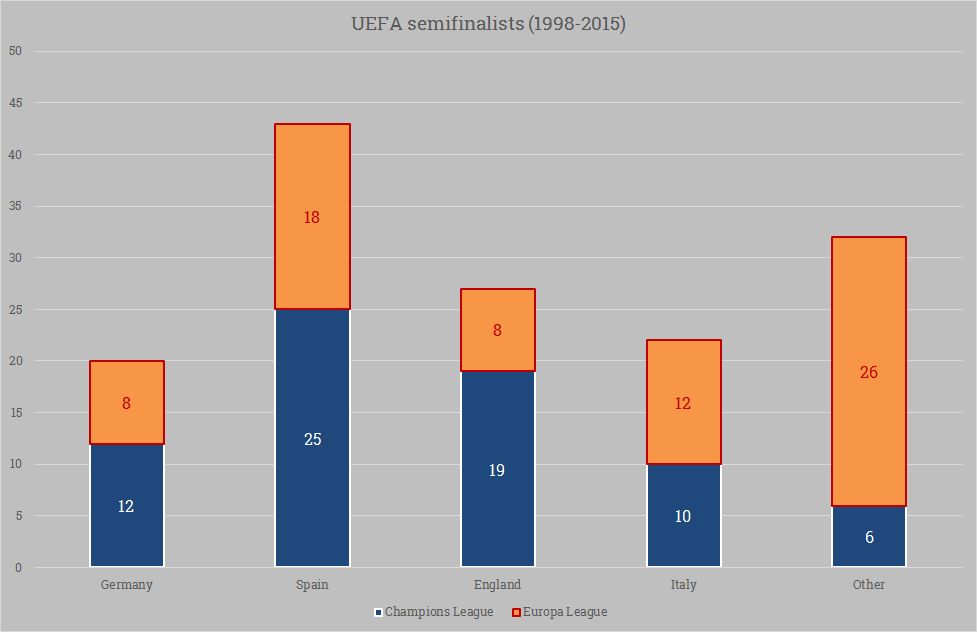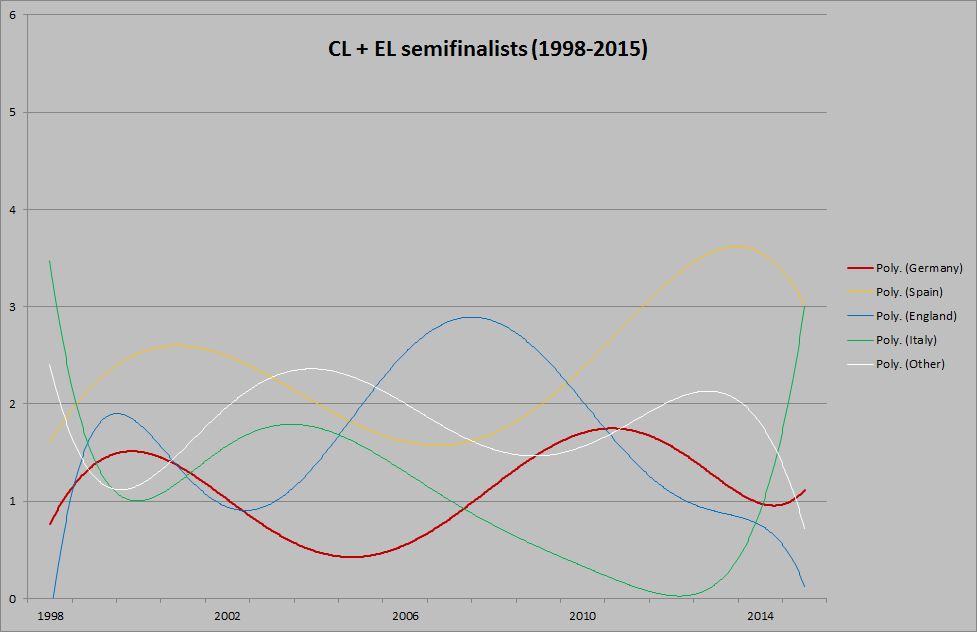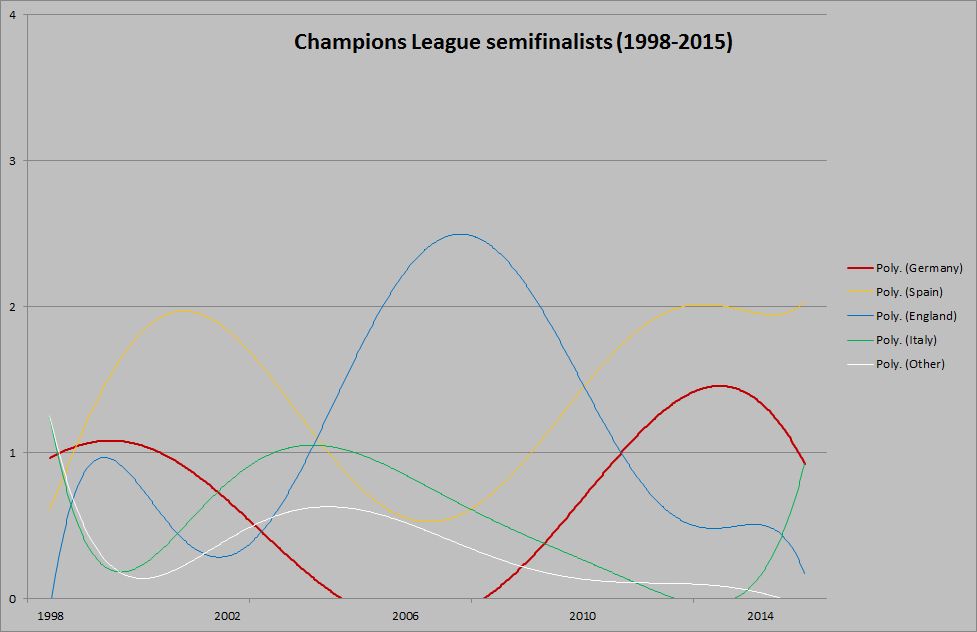State Of The Bundesliga – Part Two
In part one of our series, we found out that the Bundesliga’s financial competitiveness is rather mediocre, as the league itself doesn’t generate much of an income. That being said, money isn’t everything, it’s just a basis to make things a lot easier. In part two, we want to examine how much Bundesliga teams have actually achieved. How big are the domestic and the international gaps?
International success and comparison
It’s a rather simple approach: how successful have German clubs been in Europe? If you’ve got a strong league, chances are that you find many of your teams fighting for the Champions and Europa League.
The difficult decision in this regard was where to cut off the data. What counts as international success? Titles are the most natural number of success but a little too ultimate for such an analysis, as there’s only one title winner every year – a coincidence that would leave too many strong teams ignored.
What we ended up with is the semifinals as cut-off stage. If you make it to the top four of either competition, you’ve probably got a respectable team. Of course you sometimes find weaker clubs pushed to that stage with the support of lucky draws but that’s the exception, unlike the quarterfinals.
Our cut-off date was the year 1998, as that’s when the Champions League expanded and started featuring multiple teams from the same country on a regular basis. Any data before that would be a little dodgy as an entire league would be rewarded or punished for the performance of a single representative.
Looking at the totals, you can spot Germany’s mediocrity.

Spain are the clear winners of this race, having had the most semifinalists in the Champions League and (if you ignore the “Other” category) the Europa League. From 1998-2015, La Liga averages 2.4 semifinalists per year.
England come reasonably close in the Champions League but lack Europa League success. The Bundesliga is at a similar level to Serie A, although it still holds the lead in the more valuable category (Champions League). There are 1.1 German semifinalists per season – the majority of them were Bavarian.
Interestingly enough, this is very time-dependent. As leagues have good times and bad times, international success fluctuates as well. So we decided to visualize the development (disclaimer: we used polynomial lines to make it more intuitive and less ugly).

Every league tells its own story here. The English time of dominance in the late mid to late 2000s is almost as eye-catching as the more recent time of La Liga as Europe’s driving force. The Italian league is steadily climbing back from a deep crisis (exactly one semifinalist from 2009-2013), although it has to be said that their return won’t be as strong as the sudden increase suggests.
For the Bundesliga, the experienced audience will be reminded of the Kirch crisis. In 2002, the Kirch media group collapsed, essentially drying out the Bundesliga’s main revenue source. The league could not grow for almost half a decade and this line proves it. The usually solid semifinalist average (1.4 in 1998-2002 and 2008-2015) fell down to a ridiculous 0.4 per year in the crisis years of 2003-2007, with a total of zero semifinalists during the crisis peak of 2003-2005.
All of this becomes even more obvious when you only look at the Champions League semifinalists. After all, that’s where the rich boys rule.

You can almost taste that Bundesliga crisis…
Read all about the historical development in Europe on page two.












Insightful write up